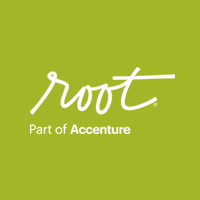If you think your people are coping well with the stresses and strains of the pandemic, think again.
They’re running on empty but too afraid to tell you.
That’s what a recent discussion with cross-industry leaders revealed. We hosted a webinar about resilience and uncovered some alarming truths about the way our people are feeling right now. The overwhelming majority of attendees said that they are:
- Running on empty
- Afraid to share how they feel with their leaders
Talent and business leaders should know about this and, hopefully, act quickly to address the problems before they grow even larger. People are hurting, they’re stressed, they’re exhausted – but they don’t feel safe enough to tell us. As a result, we may be assuming that all is well. And that’s a very dangerous assumption.
The reality is that even before the COVID-19 pandemic, we were bouncing along from the third to the fourth industrial revolutions, and the level of change and corresponding stress we had been experiencing was pretty seismic. The pandemic may have just pushed us over the edge. It’s been a long five months since the first shelter-in-place orders were issued, the exodus to WFH started, and toilet paper became a hot commodity. Most organizations and most people did an amazing job responding to the initial crisis. We saw massive retooling, supply chain reengineering, new safety protocols, and the big switch to online and virtual. But it was like an adrenaline-fueled, full crisis “fight” response – we found hidden reservoirs of fortitude and resourcefulness to help us adapt and do what needed to be done. It’s clear that that level of frenetic activity is not sustainable, and we’re starting to run out of gas.
This level of change and stress at work – where most of us spend one-third of our time – is strongly correlated to higher levels of anxiety, depression, and burnout. And that’s why we need to know and need to act.
How to Help Your People Before It’s Too Late
We suggest a two-pronged response:
- Focus on wellness and resilience to help your people recover, adapt, and thrive.
- Work to create psychological safety in your organization so your people feel safe speaking the truth, and you get to hear it.
Remember, your people leaders are the biggest influencers of employee engagement and resilience. It’s critical to arm them with the mindsets and skill sets they need to fully support their teams.
At times like this, it’s important to have a way to get to the heart of how people are truly feeling. We’ve been working with organizations to help them do this, and if you’re interested in learning how your peers are addressing this issue, please contact us and we’ll share those insights with you.
The history of disasters created by human error is also the history of silent and silenced voices that could have made a difference. Make sure all your employees have a voice. For some resources on how to get started, click the links below.
Developing Resilience Starter Kit






